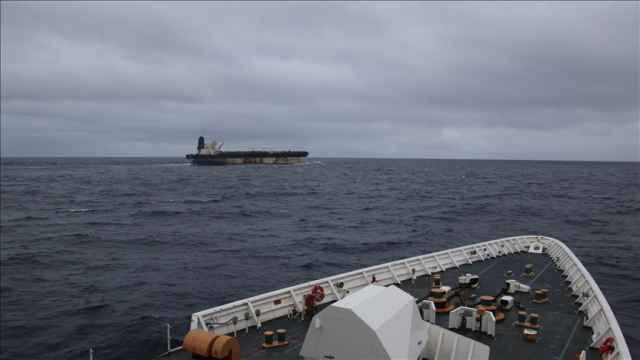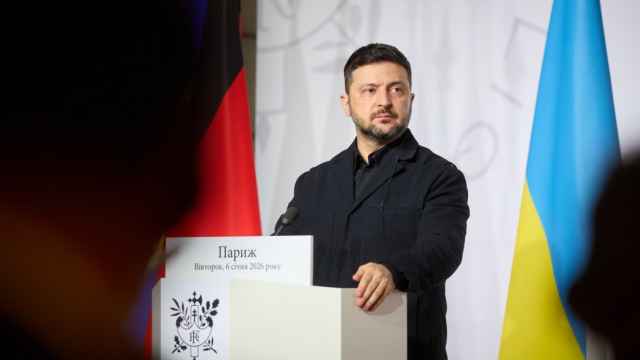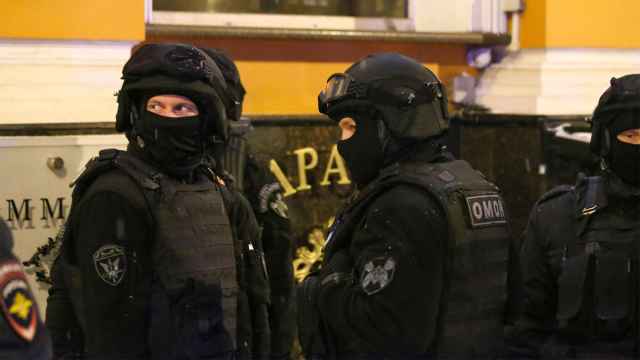In the largest bailout in modern Russian history, Bank of Moscow, the country's fifth-largest bank, will receive up to $14 billion in state-backed loans after the discovery that almost a third of the bank's assets are "problematic," the Central Bank said.
Financial transparency in a sector that includes more than 1,000 banks has been traditionally patchy, and analysts said similar balance-sheet black holes could be lurking in other major institutions.
"The situation closely resembles that of Lehman Brothers," said Natalya Orlova, chief economist at Alfa Bank, noting that the failure of an institution the size of Bank of Moscow could have repercussions for international financial systems.
Revelations about the extent of the crisis at Bank of Moscow were released after a review by the Central Bank on Friday, a little more than two months after its president Andrei Borodin was ousted during a hostile takeover by state-backed lender VTB and fled to London in the face of criminal proceedings.
The outstanding allegations against Borodin center on a $415 million loan made by Bank of Moscow to a real estate project linked to Yelena Baturina, the billionaire wife of former Mayor Yury Luzhkov, who played a key role in the bank's success.
Finance Minister Alexei Kudrin — who served as VTB chairman until he stepped down last month — acknowledged Friday that some fault for the trouble at Bank of Moscow might lie with City Hall, regulators and the Central Bank, but he laid the blame for the mess firmly at the feet of Borodin and his former co-managers.
"We hope that law enforcement agencies will take investigative and operational action against Bank of Moscow management who permitted this to happen," he said, RIA-Novosti reported.
"We propose that there be cooperation between the law enforcement bodies of various countries … because the assets have been concentrated abroad," he said.
The deputy head of the Deposit Insurance Agency, Valery Miroshnikov, said 60 billion rubles of Bank of Moscow loans was in offshore companies, RIA-Novosti reported. He told the news site Marker.ru that new criminal cases against Borodin would be opened "in the near future."
Borodin, who headed Bank of Moscow for 15 years but is now sought under an international arrest warrant, said in a statement published on his personal web site that he was, "like everyone else, shocked at the size of the $14 billion bailout."
But he raised doubts about the authenticity of the problem loans revealed Friday, describing them as "alleged and nondisclosed." He said that like his ouster from the bank in April, he believed that the bailout loan to VTB was "political."
Repeated calls to the cell phone of a London-based spokeswoman for Borodin went unanswered Sunday.
The Bank of Moscow bailout will involve a 10-year loan of 295 billion rubles ($10.6 billion) from the Deposit Insurance Agency — about the same sum that the agency issued in bailouts during the financial crisis of 2008 and 2009 — at 0.51 percent rate of interest, significantly less than the market rate.
VTB, which together with Sberbank and Gazprombank controls more than 60 percent of the Russian banking market, will contribute 100 billion rubles to pulling Bank of Moscow out of the red. As a precondition of the process, VTB will increase its stake in Bank of Moscow to 75 percent, from 46.5 percent.
VTB shares closed up 2.1 percent in Moscow on Friday, while shares in Bank of Moscow barely wavered, inching down 0.3 percent.
Bank of Moscow, which serves some 100,000 corporate clients and 9 million private customers through 381 offices, said in a statement that the bailout money would be invested in "reliable financial instruments, including Russian state securities."
Miroshnikov said the bad loans in Bank of Moscow's portfolio could be easily split off from the healthy parts of its operations.
"One half is a normal retail bank. The other is Borodin's bank," he said, news site Finmarket.ru reported.
The Bank of Moscow run by Borodin was once controlled by Luzhkov's City Hall, and it had close ties with the business empire established by his wife, Baturina, Russia's richest woman. VTB maintained Saturday that it had no idea of the extent of Bank of Moscow's financial woes when it initiated its takeover bid.
Luzhkov prevented anyone from asking "unwelcome questions" about the state of the bank's finances, VTB head Andrei Kostin told The Wall Street Journal in an interview published Saturday.
But Orlova, the Alfa Bank economist, said the extent of the problems at Bank of Moscow did not just speak to the deficiencies of a particular set of managers but the failings of government regulation and the workings of the Russian financial system as a whole.
"There are a series of banks where it is very difficult to diagnose exactly what is going on," she said. "But when a change of ownership or management happens, like in the case of Bank of Moscow, then the bank's heavy dependence on a specific group of people becomes clear.
"Of course, it's a problem of the whole banking sector — Bank of Moscow is not an exception," she said.
A Message from The Moscow Times:
Dear readers,
We are facing unprecedented challenges. Russia's Prosecutor General's Office has designated The Moscow Times as an "undesirable" organization, criminalizing our work and putting our staff at risk of prosecution. This follows our earlier unjust labeling as a "foreign agent."
These actions are direct attempts to silence independent journalism in Russia. The authorities claim our work "discredits the decisions of the Russian leadership." We see things differently: we strive to provide accurate, unbiased reporting on Russia.
We, the journalists of The Moscow Times, refuse to be silenced. But to continue our work, we need your help.
Your support, no matter how small, makes a world of difference. If you can, please support us monthly starting from just $2. It's quick to set up, and every contribution makes a significant impact.
By supporting The Moscow Times, you're defending open, independent journalism in the face of repression. Thank you for standing with us.
Remind me later.







